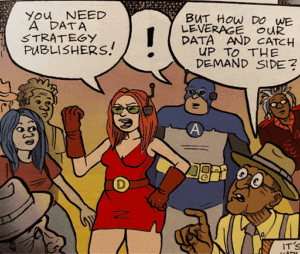 Investopedia launched in the dot-com era as an online dictionary of investment terms. Its financial audience attracted advertisers, and the glossary format drove traffic from Google searches.
Investopedia launched in the dot-com era as an online dictionary of investment terms. Its financial audience attracted advertisers, and the glossary format drove traffic from Google searches.
But times have changed. Investopedia needed to conquer social, which has supplanted search as a dominant traffic driver for many publishers. And reaching investors at the beginning of their investment journey, when they’re figuring out what everything means, meant losing them later when they gained more knowledge.
“People were maturing out of Investopedia and into MarketWatch, Seeking Alpha and Yahoo Finance,” said Investopedia CEO David Siegel. “We had a leaky bucket.”
Investopedia recognized the need to adapt to how users engaged with its content and recalibrated. IAC, which bought the company three years ago, kept its promise to invest in the site.
Siegel joined a year and a half ago from Seeking Alpha to continue the transformation. He’s led the publication to a 40% year-over-year revenue increase and a 17% gain in traffic.
To get those results, Investopedia built out content sections in retirement, wealth management and stock analysis, publishing 300% more articles a month this year compared to last.
“We are building 201, 301 and Ph.D.-type content and sophisticating up our audience,” he said.
The site expanded into video at its users’ request, growing from almost no videos to more than 3,000.
This content push coincided with a huge growth in social traffic. Non-search traffic is more than twice 2014 levels, for example. Facebook traffic grew 500% year over year. Search still remains the biggest traffic driver, but social is the fastest-growing traffic source.
Investopedia finds that people read stock-related content on Twitter because of the platform’s breaking news focus. Facebook’s substantial baby boomer demographic reads retirement content. And on LinkedIn, financial adviser-related content dominates.
Investopedia’s more substantial content offerings created more opportunities for branded content from financial advertisers, its core direct-sold business.
“Asset management firms like Fidelity, Schwab and BlackRock produce great content but they have no distribution channel for their content,” Siegel said.
Investopedia solves for distribution. Sponsored content helped its direct sales double over the past two years.
But Investopedia is also seeing growth from the opposite end with programmatic. It hired a dedicated programmatic seller to work with agency trading desks and secure brands’ programmatic budgets. To bring in more demand and improve yield, it added header bidding, which is one reason why its CPMs are exceptionally high for programmatic, Siegel said.
Because certain segments of the investment audience are much higher-value than others,Investopedia continues to work on leveraging its data management platform, Lotame. Advertisers can target coveted groups, such as high net-worth individuals and financial advisers. Financial advisers also create profiles on the site, creating a first-party data source it’s just starting to mine.
In the future, Investopedia sees opportunity for its new Q&A platform. The user-generated content section allows financial advisers to answer common questions, such as how to deal with a windfall or plan around a retirement need.
“Our core mission is to make people smarter,” Siegel said. “We were not fulfilling on that mission beyond the entry level of finance and investing. We stepped on the gas pedal to serve every single audience, from financial advisers to occasional investors.”












